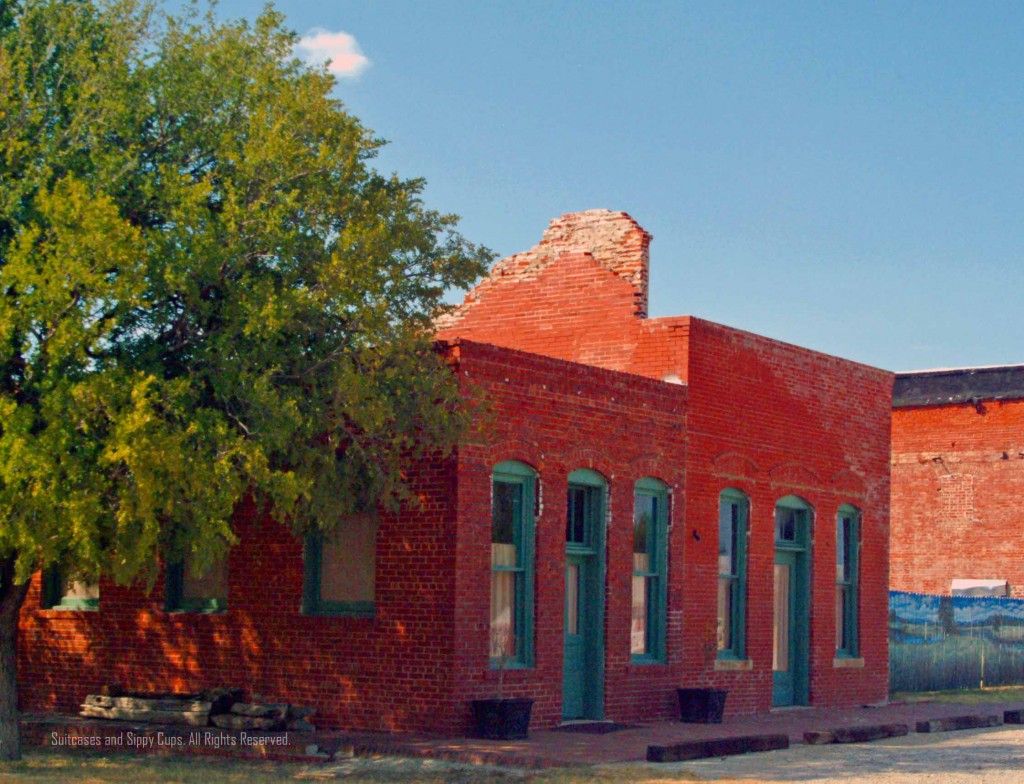 The Mercantile Building~Selling Everything from Cradles to Coffins
The Mercantile Building~Selling Everything from Cradles to Coffins
Ghost towns have a uniquely American flavor that draws you into their mystery and intrigue. As you wander from empty building to empty building, you can't help but have the feeling that you have all the pieces of the story except the storytellers. It's almost as if you have reached the climax of a novel to find that the last chapter has been ripped out. And though we can never know the details of what happened within those boarded up and crumbling walls, you just know it is the story of the birth and death of a dream.
Thurber, Texas was just a typical turn of the century town that experienced a huge boom in population around 1920, with an influx of 10,000 people representing 20 nationalities. Although most ghost towns are associated with oil booms, in the case of Thurber it was the coal that giveth and the oil that taketh away. Coal mining for the burgeoning railroad system was the bread and butter for Thurber, although quick thinking investors also developed brick production to diversify the money making opportunities. Many of the red clay bricks produced in Thurber can still be seen in brick lined streets all over the United States. The discovery of oil in nearby Ranger was the ultimate demise of the town of Thurber, as workers and investors deserted coal mining for the more lucrative oil.
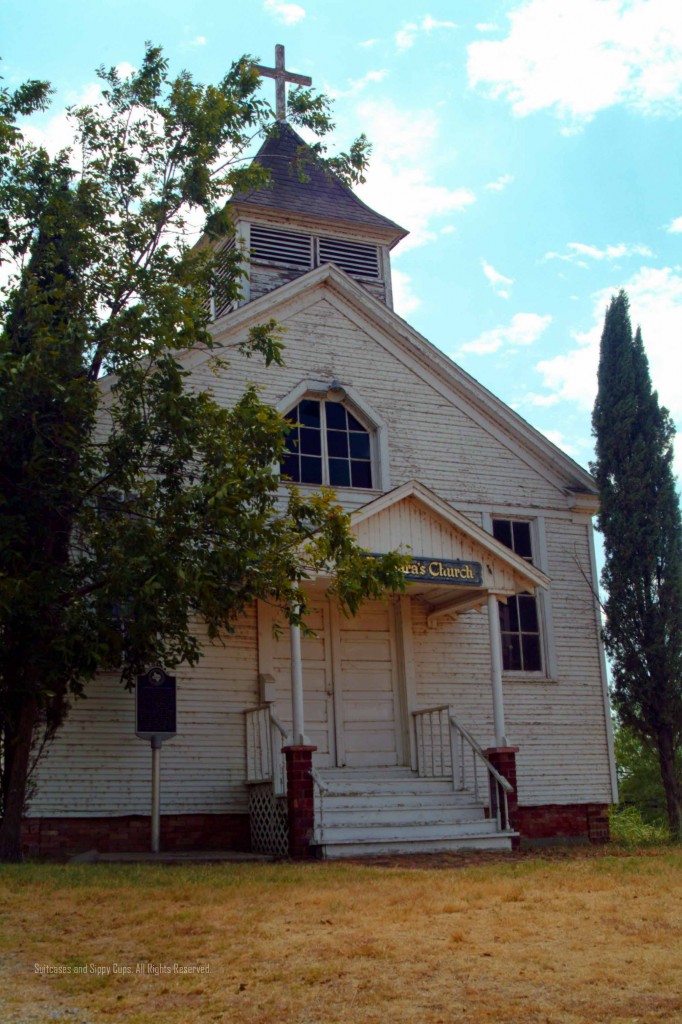 Company Owned Catholic Church of Thurber
Company Owned Catholic Church of Thurber
Thurber, Texas was completely owned by Texas and Pacific Coal Company, making it the first town to be completely company owned. Residents of Thurber shopped in company stores, went to company schools, and worshiped in company churches. Miners were even paid in Thurber dollars, money that was only usable inside the city limits of Thurber. In 1903, workers struck against unfair pay and working conditions, ushering in the modern labor movement in the southwest and making Thurber the first completely unionized city in the country.
With such a solid claim in the history of the South, It is almost surprising to see that the only remnants are a single smokestack, a few foundations, and crumbling cemetery. To explore the history of Thurber, the best place to start is the W.K. Gordon Center for the Industrial History of Texas. This mouthful of a museum is dedicated to the history of Thurber, and begins with an informative 20 minute presentation that gives a good picture of the town at its peak. Exhibits throughout the small museum present vignettes of life in Thurber along with motion sensitive recordings of actual town members telling their stories.
 Tract Houses were brightly colored and sold for $300 dollars
Tract Houses were brightly colored and sold for $300 dollars
Next to the museum, a handful of original buildings from Thurber are available for touring. These buildings are not a part of the museum price, and they are somewhat in disrepair. Still, you can tour a typical tract house, most of which were removed from their foundations and sold for $50 when the town disintegrated. The Catholic Church and the bandstand are also preserved for the public. A word of warning: if you don’t like wasps or grass burrs, watch out. We had a run in with both of these stinging annoyances while we were touring.
The view from the elevated museum steps you get the impression that Thurber is not so much a ghost town, but a gone town. The remaining smokestack and foundations can be seen and pondered from this vantage point. The smokestack was formerly a part of the high tech electrical plant of Thurber. At the demise of the city, one of the founders begged for at least the smokestack to remain and so it does.
 Interior of the Smokestack Restaurant
Interior of the Smokestack Restaurant
One of the only other remaining buildings, the Company Store, has been converted into a homestyle restaurant where they serve typical Texas diner fare and the quite possibly the best French fries ever made. Photos and memorabilia line the walls making this the perfect place to fill up and learn more about Thurber.
Before leaving town, a tour of the town cemetery is a must. Over a 1000 headstones from 1880 and on are the only physical remains of the lives that built the town of Thurber. Most strikingly, the headstones are written in a potpourri of languages, mostly Italian, Spanish, and Polish, representing the many immigrant families that called Thurber home.
Vast amounts of coal deposits still remain underground beneath the broken foundations and the singular smokestack. It is possible that the town may one day boom again and be filled with new residents with new stories. Until then, the ghostly stories that still whisper through the brick buildings forged from the ground beneath will have to do.
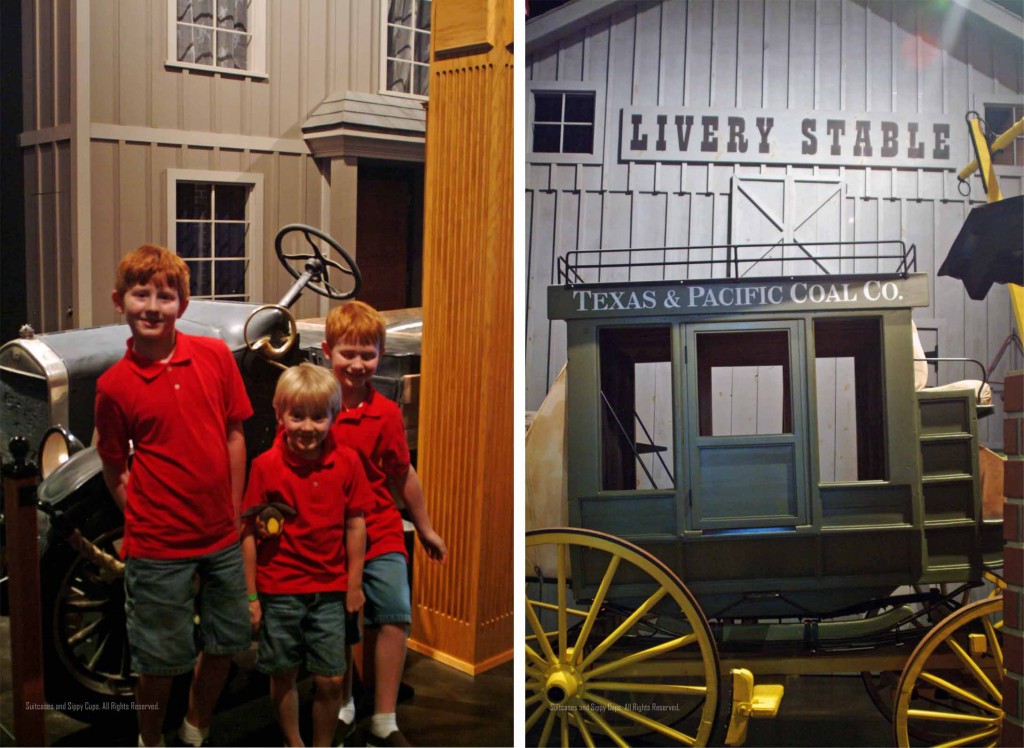
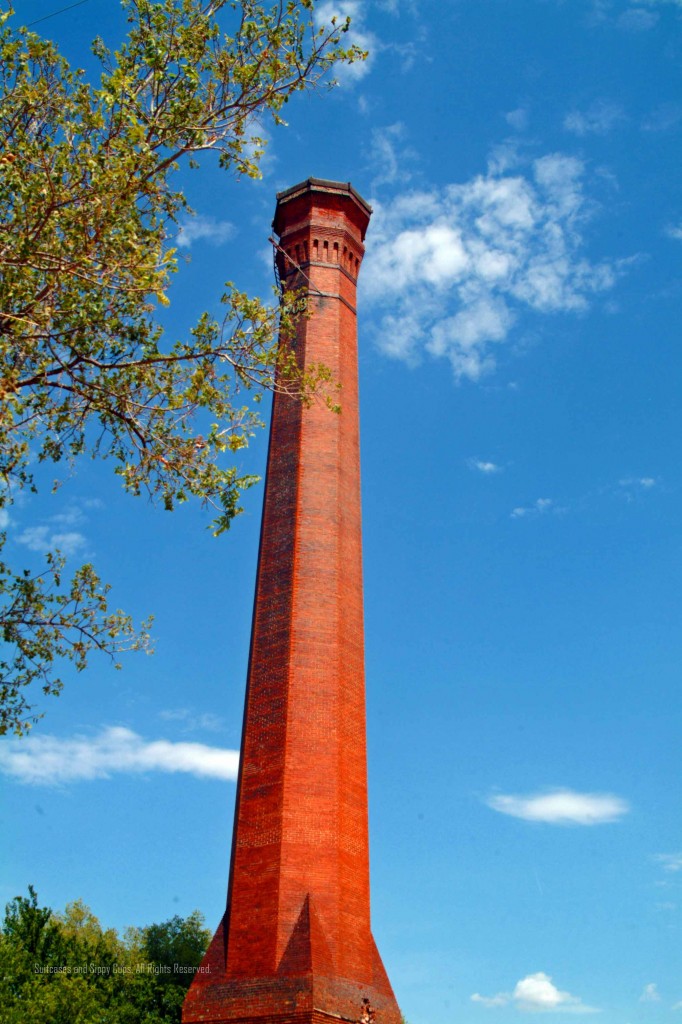
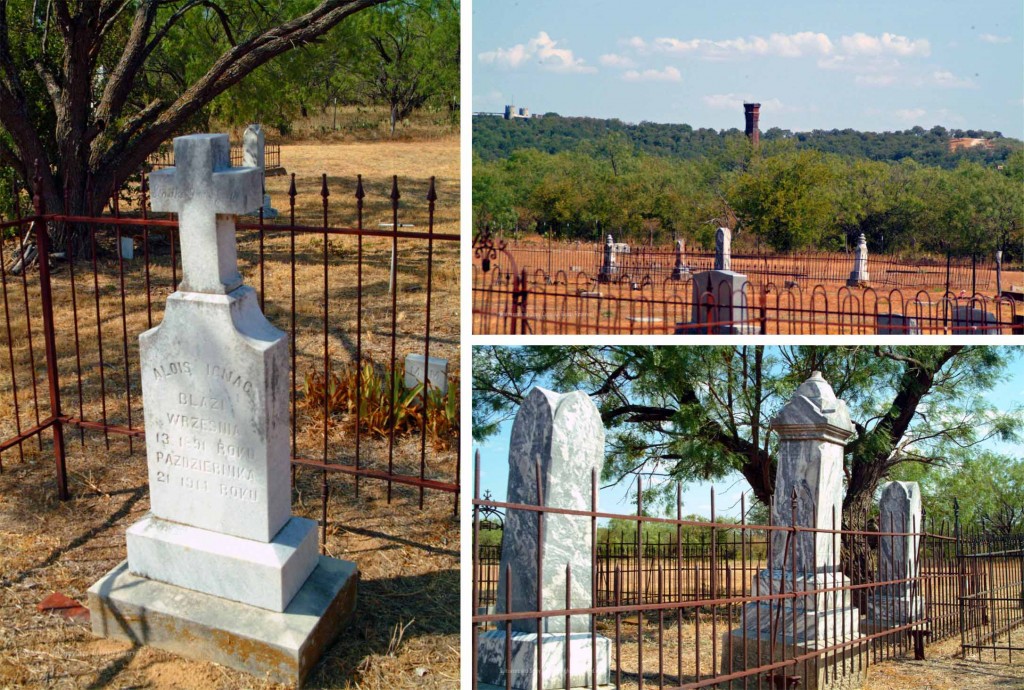
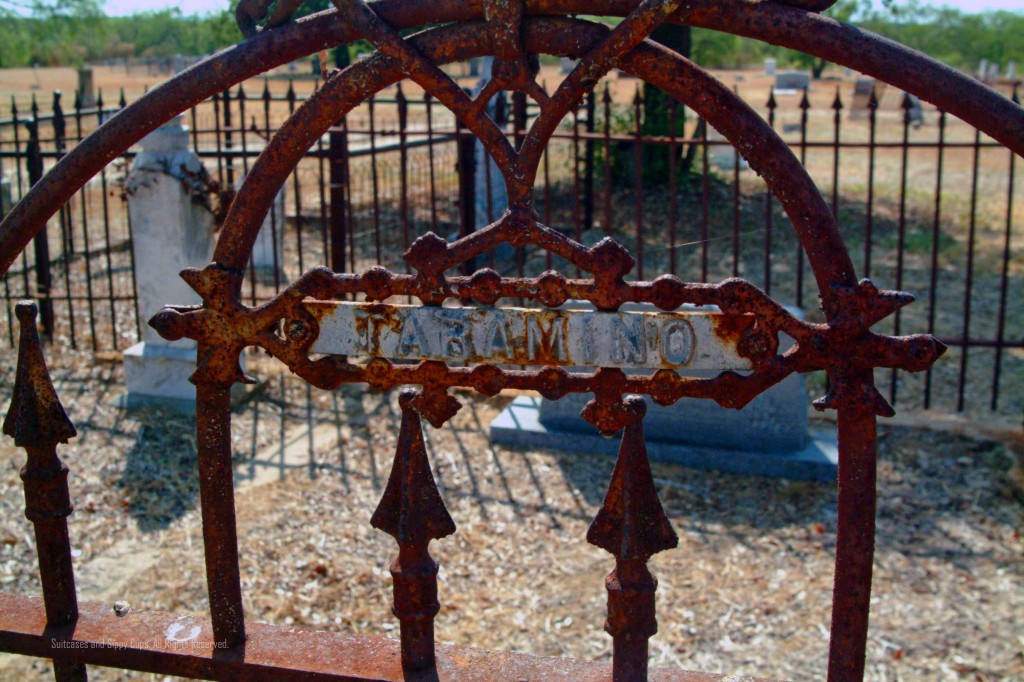
Wow! Thank you bringing Thurber back to life for your readers! I had no idea that the town even existed, let alone the first to be completely company owned or the first to be unionized. So much history!
Many blessings,
Lisa
http://our4kiddos.blogspot.com
Too cool! As a fellow Texan, I had no idea about this! Will definitely have to visit!
Thanks so much for dropping by the Be-Bop-A Blog Hop! I’m a follower and I hope you’ll stop by again soon! Have a great day! 🙂
Seeing all your pictures makes me want to visit now!! Looks like it was a great time!
WM
What great pictures and what an amazing story! You are helping keep Thurber alive! I grew up in AZ not far from Tombstone, so I have a soft spot in my heart for ghost towns.
followed you here from FMBT… hope you can follow me back at http://8myall.com
thanks much!
Oh wow, I love this post!! We love history and traveling as well, thank you for sharing so much about Thurber TX!! Yes, I do want to check it out!! Thanks so much!
Cool site. Wish we traveled more as a family – just can’t seem to get it together. Popping over from the blog hop. Am your newest follower. liz
we are going to Texas in two weeks for the Oregon LSU game – would be cool to see some of this stuff!! Hope you have time to stop by today 🙂
i love history like that! i’ve never been to texas, but it is on my list of places to visit. seems so nice! anyway i’m following you from the blog hop. i hope you will take the time to check out my blog and follow back! 🙂
lindsay @ lindsayelizabethm.blogspot.com
I have a copy of a photograph someone sent me of the downtown of Thurber during its prime. My great grandfather Ferd H. Hill had a general merchandise store there. The name Hill could be seen on the top of the building, made from brick.
My dad was raised in the Mingus, Thurber area. He was raised by his grandfather, Ferd and Ada Hill. I have many family stories that my dad told.
In Mingus, there was a quaint ice cream parlor that Louis Santi and his wife owned. I remember going there s a child having ice cream.
I go through there every time I travel to visit some family but only stopped once. Unfortunately I didn’t get to go to the museum but I did go the restaurant and the cemetery. The people that own the restaurant and work there are so very nice and very willing to share all that they know. The cemetery was very interesting and I got pictures of several of the tombstones. More specifically the ones in foreign languages so that I could take them home and translate it. I hope to translate them and give the translations to the people who live there so maybe they can put signs up by the graves with the translations on them.